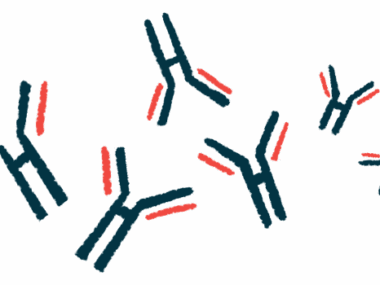Combining biopsy-based scores can better predict kidney prognosis
Assessing kidney damage through biopsy is 'critical in predicting renal prognosis'
Written by |

A combination of two standardized scores of kidney damage can accurately predict the prognosis of renal disease in people with ANCA-associated vasculitis (AAV), a study indicates.
This composite measure — the renal risk score (RRS) and the renal vascular lesions (RVL) score — “may serve as a new predictor of renal [kidney disease] prognosis” in people with AAV-associated glomerulonephritis, or inflammation and damage to the kidneys’ filtering units (glomeruli), researchers wrote.
The study, “Evaluation of three scoring systems for predicting renal prognosis in antineutrophil cytoplasmic antibody-associated glomerulonephritis,” was published in the European Journal of Medical Research.
AAV can lead to inflammation and damage to small blood vessels in kidneys
In AAV, self-reactive antibodies, called ANCAs, lead to the abnormal activation of neutrophils, a type of immune cell, causing inflammation and damage to small blood vessels, most often those in the kidneys.
Kidney involvement in AAV is typically characterized by glomerulonephritis, which can affect normal kidney function and possibly lead to kidney failure.
A kidney biopsy, wherein a small piece of tissue is collected and examined under a microscope, is a standard test to confirm an AAV diagnosis and assess disease activity or progression.
Several standardized systems have been used to assess the severity of ANCA-associated glomerulonephritis or AAGN, helping to predict the prognosis and guide treatment.
These include the RRS, which is based on kidney biopsy and lab results; the RVL score, which assesses kidney inflammation and lesions through biopsy; and the Birmingham vasculitis activity score (BVAS), a composite measure of AAV severity based on symptoms and lab results.
Here, scientists in China analyzed the predictive value of these different tools for the prognosis of kidney disease in 94 AAV patients (48 women and 46 men) diagnosed with AAGN via a kidney biopsy.
All of the patients, with a median age of 60 years, were given anti-inflammatory and/or immunosuppressive treatments, mainly glucocorticoids, and were followed for a median of three years.
Over the course of follow-up, 38 patients progressed to kidney failure, which was defined as the need for long-term kidney replacement therapy such as dialysis or kidney transplant.
The researchers used statistical models to test how well each of the disease severity scores, as measured at the initial kidney biopsy, predicted the risk of kidney failure during follow-up.
Results showed that patients with a high RRS had the highest rates of kidney failure, while patients with low RRS had the lowest rates, with significant differences in prognosis between the high-, medium-, and low-score groups.
Similarly, kidney failure was significantly more common among patients with the highest RVL scores — reflecting severe kidney lesions — than among those with lower scores, indicating either mild, moderate, or no lesions.
Overall, these findings suggest that the tools do measure disease risk as intended.
“Survival analysis revealed the best renal prognosis in the low RRS and without RVLs groups, and the worst renal prognosis in the high RRS and severe RVLs groups, suggesting that the RRS and RVLs score have high predictive power for renal outcome,” the researchers wrote.
Statistical models showed that the RRS was significantly better at predicting the risk of kidney failure than either BVAS or RVL score (accuracy of 86.5% vs. 62.4%-76.3%).
Combination of scores led to higher accuracy than individual measures
In addition, the researchers found that even better accuracy could be attained by combining these scores: specifically, the combination of the RRS and RVL score led to higher accuracy (91%) than either of the three measures individually.
Combining all three measures also had high accuracy (94.2%), but differences between the triple combo and the RRS-RVL combo failed to reach statistical significance, meaning that adding BVAS to the other two measures did not significantly improve the accuracy.
This suggests that assessing kidney damage through kidney biopsy is “critical in predicting renal prognosis,” the team wrote.
Since BVAS is a more general tool that can be cumbersome to administer, the researchers suggested that the combination of RRS and RVL could be used to predict the prognosis of AAV-associated kidney disease with the best accuracy.
“The predictive power of [RRS plus RVL] for renal prognosis was better than that of RRS, BVAS, and RVLs score,” the scientists concluded, adding that the combined score “should be used in clinical practice for the assessment of renal prognosis in patients with AAGN.”
Among the study’s limitations, the team noted its single-center nature and the small number of patients included, highlighting the need for larger studies to confirm these findings.







